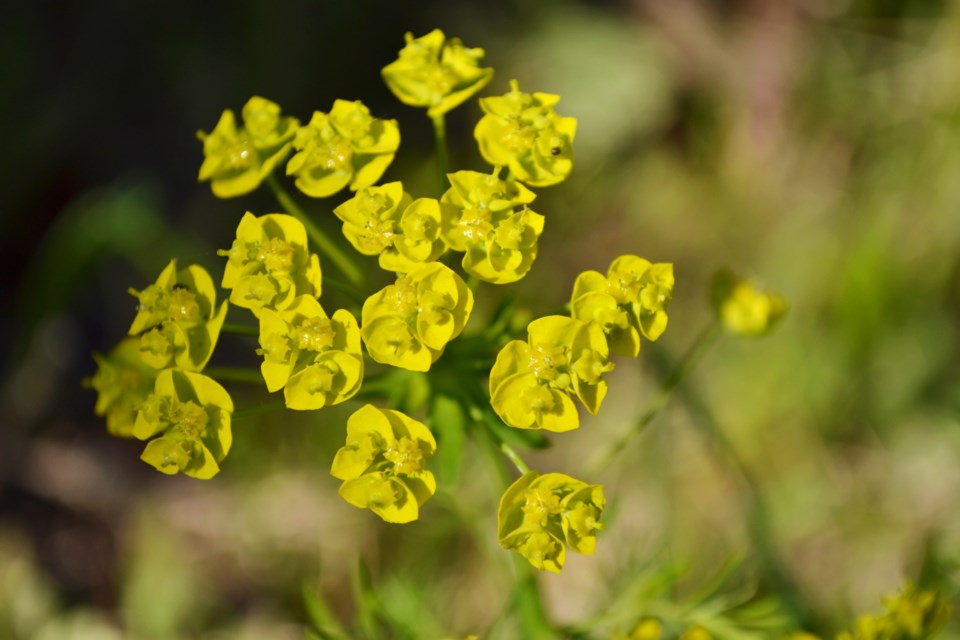A pretty yellow flowered noxious weed called leafy spurge created a passionate conversation at a workshop by the Saskatchewan Goat Breeders Association.
Agri-environment specialist Victoria Nameth, with the Saskatchewan Ministry of Agriculture, was outlining program funding for targeted grazing and biological control of some noxious weeds when one of the goat farmers raised the subject.
“You should tell more people about these programs,” said the Grenfell district farmer. “The public doesn't understand.”
Under the Canadian Agricultural Partnership (CAP) programs, funding up to of $50,000 a year for five years is available for control of certain weed species.
Most CAP funding for programs is limited to $50,000 maximum for five years.
The Grenfell farmer said the leafy spurge was on the boundary of his farm a few years ago. “Now it's 360 (degrees) around me. The genie is out of the bottle.”
The weed has invaded nearby crops and adjacent trees and shrubs, but grain farmers owning that land “don’t know about these programs or don’t care.”
Nameth said the CAP program covers up to 50 per cent of the cost of spraying or pays for contracted grazing by goats or sheep to control the weed.
“You’ll never get rid of it,” she said. “You can control it so you can live with it.”
One farmer said he annually sprayed a large patch of leafy spurge and now has a patch about the size of a half-ton truck “with the odd one here and there.”
Nameth said leafy spurge roots go 35 feet deep and spread out more than that.
The best time to control the weed by cutting, spraying, or grazing by goats or sheep is when the flowers are yellow but not yet forming seeds.
“At that stage the plant has to start all over again.” A second grazing or spraying is usually needed when a second growth develops.
For targeted grazing, the leafy spurge is most palatable in the early flowering stage.
Sheep and goats digest the seeds where other livestock pass them through the feces.
Nameth said control requires a long-term management plan.
She added there is a shortage of contractor/herders with goats or sheep to graze/control the weeds.
Program specialist Jaycee Peutert said the problem is compounded by some people picking the flowers. “I’ve heard of Alberta trucks parked beside the road picking the pretty yellow flowers.”
Peutert said an eligibility change in gross farm income from $50,000 to $15,000 under CAP risk assurance was a big win for the sector.
Farmers interested in the CAP programs should go on the web to www.saskatchewanagriculture.ca/cap.
Ron Walter can be reached at [email protected]




